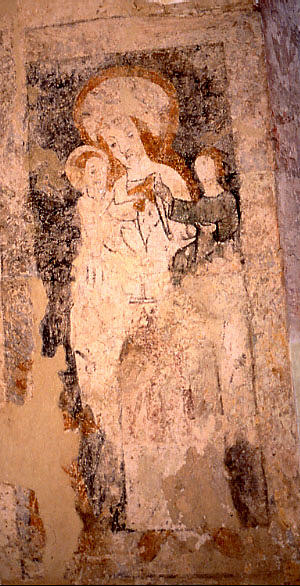Shorthampton, Oxfordshire (†Oxford) C.15
The Miracle of the Clay Birds

A great rarity; one of the apocryphal childhood miracles of Christ There are many such stories, some of them – for example his reading the letters of the alphabet without learning them – in effect simply tales of remarkable infant precocity. Others, such as the story of the young Jesus, apprenticed to a dyer, drawing two colours of cloth from one pot (there is a miniature in a manuscript in the Bodleian Library), or this one, have an out-and-out supernatural element.
According to the legend, the main source for which is the apocryphal Gospel of Nicodemus, the child Jesus, playing one day in the mud, took some of it and modelled it into birds. When he clapped his hands, they came to life, and flew away. In some other accounts, various peripheral flourishes are added – one, stressing the infant Creator’s demonstration of power, has Joseph reprimanding Jesus for playing on the Sabbath, and witnessing the miracle as a mute rejoinder. Another recounts how angels brought the Child golden toys, which he rejected in favour of the humble clay birds he then brought to life.
At Shorthampton, the infant Jesus is held on his mother’s right arm, holding out one of the clay birds to the child, probably his half-brother James, on her other arm. According to ET Long¹, there was once a third child kneeling in front of the group, presumably at the left where some dark yellow pigment is visible under a patch of plaster.
Mary and the children advance towards the onlooker from within a rectangular painted frame, and as the south aisle is known to have been altered in the 15th century, this painting, like most (but not all) of those at Shorthampton, dates almost certainly from then. The painting of St Zita, one of only two in England, is now on the site, and others will be in due course.
Website for Shorthampton All Saints
¹ ET Long, Medieval Wall Paintings in Oxfordshire Churches, Oxfordshireiensia, Vol. XXXVII, 1972, p.86ff